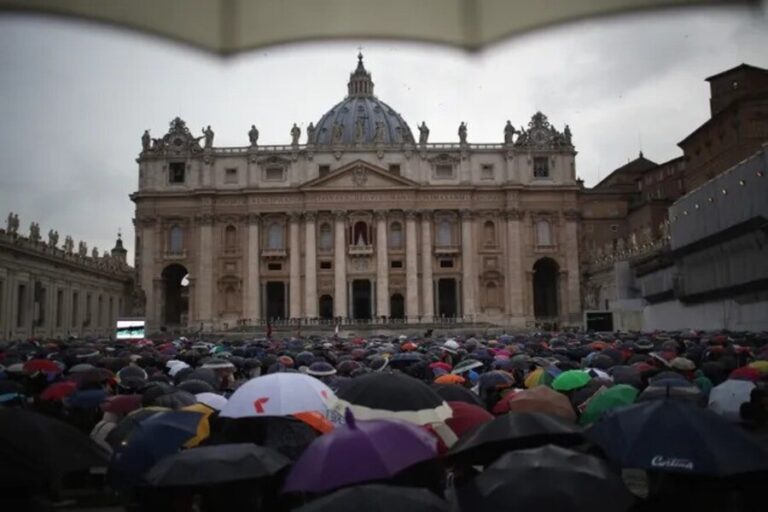With the death of Pope Francis on April 21 — Easter Monday — following a prolonged respiratory illness and a fatal stroke, the Roman Catholic Church faces a pivotal moment. As 1.4 billion Catholics worldwide mourn the loss of their spiritual leader of 12 years, attention now turns toward the secretive and solemn process of choosing the next pope: the conclave.
This ancient, tightly controlled election will unfold within the historic Sistine Chapel at the Vatican, behind locked doors and far from public view. Here’s an in-depth look at what to expect in the coming weeks.
The Conclave: A Tradition of Secrecy and Spirituality
The word conclave derives from the Latin phrase cum clave, meaning “with a key,” symbolizing the locked and sequestered environment designed to shield the electing cardinals from outside influences — whether political, familial, or media-driven. The conclave occurs only when the papal seat becomes vacant due to death or resignation, as was the case with Pope Benedict XVI’s unprecedented retirement in 2013.
Before entering the Sistine Chapel, the College of Cardinals — the church’s senior-most officials — will first gather for a solemn Mass at St. Peter’s Basilica, seeking divine guidance for the momentous decision ahead. Only cardinals under the age of 80 are eligible to vote; out of 252 cardinals globally, 135 will participate in this election, according to the Vatican.
When Will the Conclave Begin?
Following papal tradition, the conclave will commence between 15 and 20 days after Pope Francis’ death, allowing time for mourning ceremonies and final preparations. Officials anticipate the gathering to begin between May 6 and May 11, though an exact start date will be formally announced soon.
Historically, the duration of a conclave can vary greatly. The last conclave, which elected Pope Francis in 2013, concluded remarkably quickly — within 28 hours. However, the process has, in past centuries, stretched for days, months, and even years; most infamously in the 13th century, when a papal vacancy lasted nearly three years before Gregory X was elected.
How the Conclave Works: Voting, Rituals, and Signals
Each day during the conclave, up to four rounds of secret ballots are held — two in the morning and two in the afternoon. Cardinals handwrite their selections on slips of paper and place them into a chalice before they are tallied. To elect a new pope, a candidate must secure a two-thirds majority.
If no candidate emerges with the necessary support, the ballots are burned with a chemical mixture to create black smoke (fumata nera), signaling to the world that no decision has been made. When a pope is finally chosen, a different chemical mixture creates white smoke (fumata bianca) from the chapel’s chimney, announcing that the Church has a new leader.
If voting reaches 33 rounds without a decision, a runoff between the two leading candidates is triggered, but even then, a two-thirds majority remains mandatory for the election.
Following the decisive vote, the senior cardinal deacon traditionally steps onto the balcony of St. Peter’s Basilica to announce, “Habemus Papam” (“We have a pope”), and the newly elected pontiff presents himself to the awaiting faithful and the world.
Historical Perspective: The Evolution of Papal Elections
Pope Francis was the 266th leader of the Roman Catholic Church, which traces its papal lineage back nearly 2,000 years to St. Peter, one of Jesus Christ’s apostles. His election in 2013 marked a series of firsts: he was the first pope from the Americas, the first Jesuit pope, and the first to take the name Francis, symbolizing a commitment to humility and service.
The conclave rules evolved over centuries, often in response to political deadlocks. For instance, during Gregory X’s election in the 1270s, electors were famously locked in a decaying building and fed only bread and water until they reached a consensus — a brutal but effective measure that led to the streamlined procedures seen today.
Why the Next Conclave Matters
The upcoming conclave holds significant implications not just for the Catholic Church but for global politics, interfaith relations, and humanitarian issues. Pope Francis’ tenure was marked by efforts to modernize the church, champion the poor, address climate change, and reform Vatican governance. His successor will inherit not only these initiatives but also the challenges of a changing world — from dwindling church attendance in some regions to growing persecution of Christians in others.
Choosing a new pope is about more than tradition; it is a deeply spiritual and strategic decision that will shape the direction of the Catholic Church for decades to come.
User-Intent Focus: Quick Answers
- What is a conclave?
A secretive election where cardinals choose a new pope inside the Vatican’s Sistine Chapel. - Who votes?
Cardinals under the age of 80. This time, 135 cardinals are eligible to vote. - When will the conclave start?
Between May 6 and May 11, 2025, following the traditional mourning period. - How is the new pope announced?
When a two-thirds majority is reached, white smoke rises from the Sistine Chapel chimney, and the words “Habemus Papam” are proclaimed. - Why does this matter?
The new pope will steer the Catholic Church through a pivotal era of global challenges and spiritual renewal.
